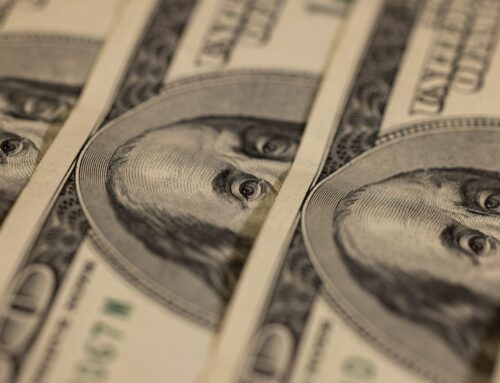There is nothing wrong with borrowing money. But like many things it’s best used in moderation. Most Americans borrow money to buy a car or a house, or to finance their kid’s education. It may not be a first choice, but a person can turn to credit cards to make ends meet to make up for a short-term cash flow problem. This makes sense, as long as the debt payments are reasonable. But what is a “reasonable” debt payment? The answer depends on your income.
Government finances are quite different from individual finances, but they’re similar when it comes to interest. It makes perfect sense for the U.S. government to borrow money to cover major expenses that it cannot pay out of current income (for example, World War II) or to “go in the hole” during a recession. Reflecting the different options presented to governments versus households, it even makes sense for the government to borrow on a regular basis to cover ongoing expenses (both mandatory and discretionary spending), as long as the debt payments are reasonable and total debt is outpaced by actual Gross Domestic Product (GDP) growth. But, that’s the catch! U.S. government debt payments are not reasonable now, and to say they are growing rapidly is an understatement.
In 2017, roughly eight cents of every dollar Americans paid in taxes went to pay interest on government debt. (Unlike individuals, the government does not bother paying off the principle; it borrows more money to repay existing borrowers.) In just five years (in 2022), that figure will jump about 75 percent; roughly 14 cents of every tax dollar will go to pay interest. In 10 years time, the government will spend as much (or more) on interest as it spends on the military, which already makes up more than half the discretionary budget. Interest payments will exceed non-defense discretionary spending years before then.
The most recent economic forecast from the Congressional Budget Office (CBO) was released in June 2017, prior to passage of the large tax cuts in December 2017. They are currently updating their forecast to take the new law into account. The CBO forecast of pre-tax-cut government revenue is roughly equal to post-tax cut baseline revenue forecast in the recently released Fiscal Year 2019 President’s Budget Request. Yet the December 2017 tax cuts were forecast to reduce government revenue by roughly $1 trillion over 10 years (including dynamic macro-economic effects). The President’s Budget forecast is based on GDP growth of roughly five percent a year, compared with roughly four percent for the CBO forecast. A one-percent difference may not sound significant, but compounded over 10 years, it is huge. The forecast of GDP in 2027 is 11 percent higher than the CBO forecast. In short, the baseline forecast is very optimistic, if not suspect.
The president’s proposed budget does not change total government revenue (compared to the baseline). But, it does reduce total non-interest spending by 5.8 percent. If the budget is enacted as proposed, and if their highly optimistic growth projections prove correct, the result would be a 30 percent reduction in the deficit and a 4.7 percent reduction in interest payments (over 10 years). Yet even with these optimistic – we would say unrealistic – parameters, the president’s proposed budget still requires that 13 cents of every tax dollar be spent on interest payments by 2028. Interest payments in 2028 under the president’s proposal would be only three percent smaller than defense spending. Interest payments would be 75 percent larger than non-defense discretionary spending.
No one knows for sure how much the government can spend on interest before “the good ship America” runs aground. Obviously, the U.S. government has much more leeway to borrow than do individuals seeking a mortgage or a car loan. If you keep borrowing, bankers will eventually turn down your request for a new loan. America benefits from the dollar being the world’s reserve currency; there are many buyers of the country’s debt and interest rates have been very low (although now rising). But, if that changes – even a little bit – interest costs will increase beyond the CBO and president’s forecast. (It is worth noting that about one-third of U.S. debt is held by foreigners, in large part by the governments of China, Japan, and major oil-exporting countries.)
The U.S. must change the debt trajectory before interest payments consume the budget. Neither the President’s budget nor either party in Congress seem inclined to do that. It is too easy for politicians, at least in the short-run, to add to the debt and let future interest payments increase. But if you look at the numbers, it is clear that we are headed into fiscal calamity. When we get there, we are all going to wish we had demanded that our political leaders reduce the government’s debt burden, rather than look the other way while they kept increasing it.











Get Social